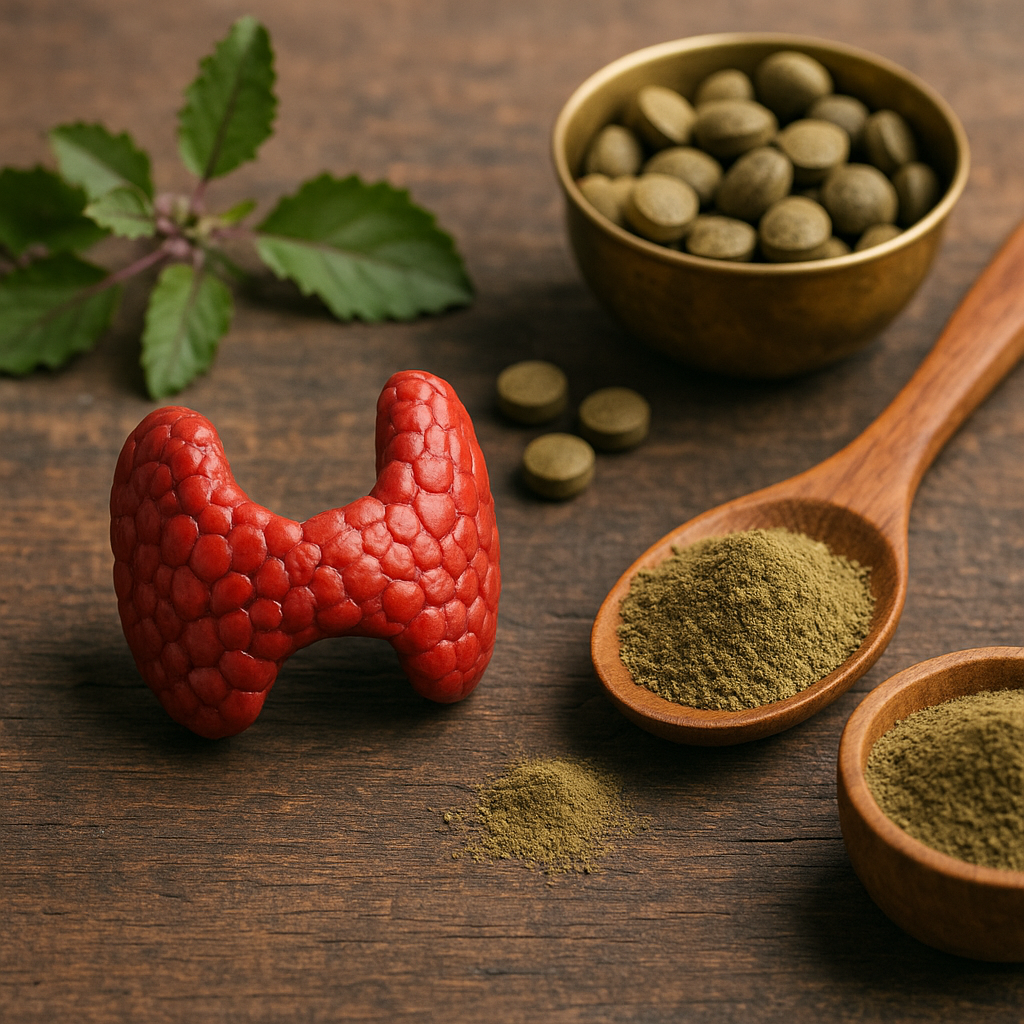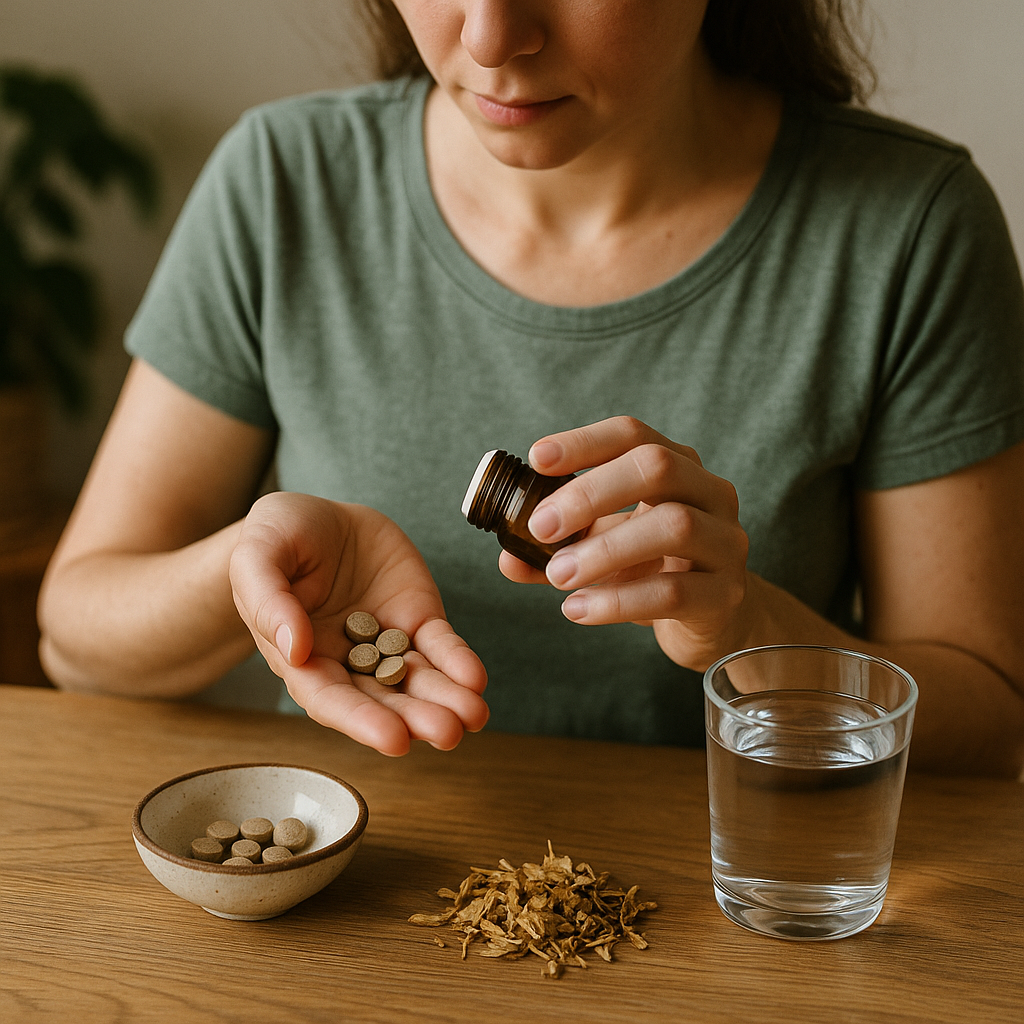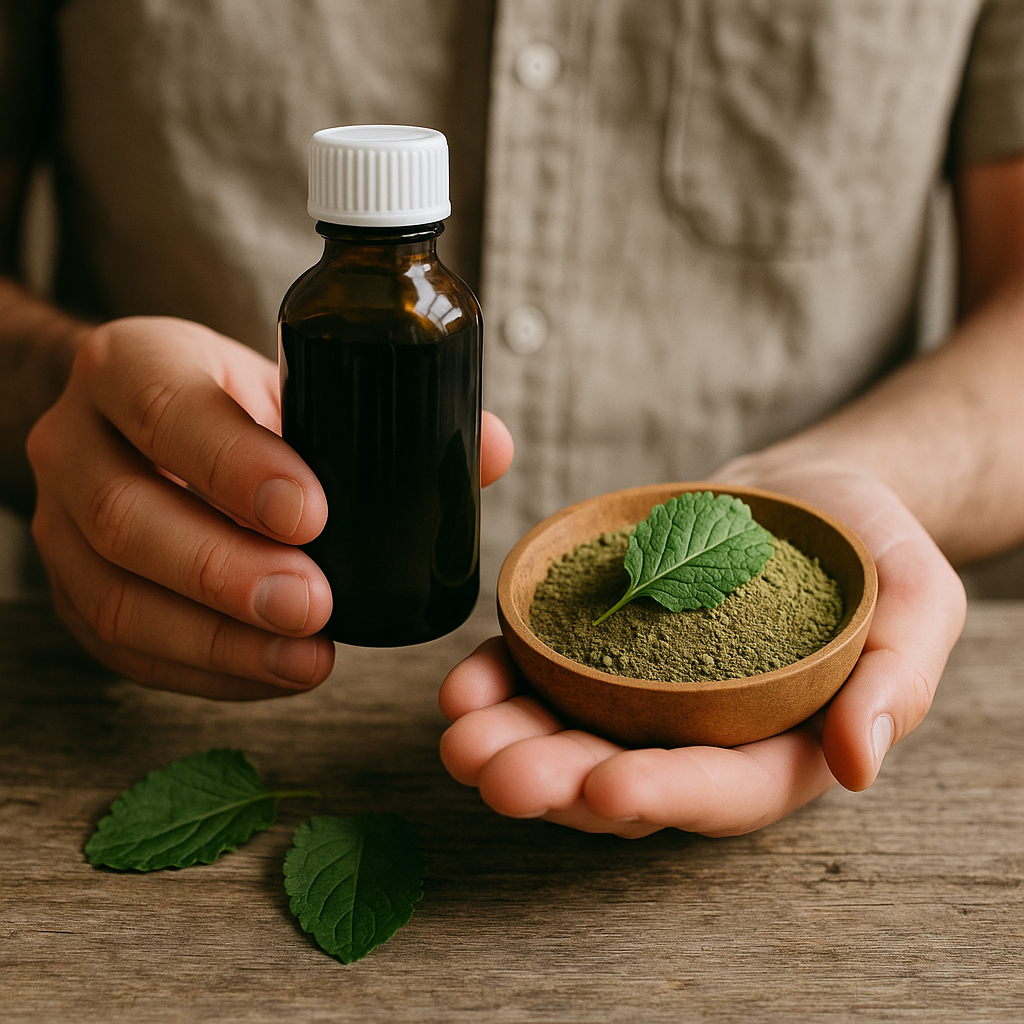Ask Ayurvedic doctor a question and get a consultation online on the problem of your concern in a free or paid mode. More than 2,000 experienced doctors work and wait for your questions on our site and help users to solve their health problems every day.
Shop Now in Our Store
Hyperthyroidism Ayurvedic Medicine: Ancient Wisdom for a Modern Hormonal Storm

Introduction
Hyperthyroidism is one of those things you don’t really think about until your body starts acting like it drank three espressos too many. Racing heartbeat, unexplained weight loss, shaky hands, that weird, restless energy that feels like anxiety but doesn’t go away with a nap or a cup of chamomile tea. For those living with it, hyperthyroidism can be a daily battle between the mind and body — one trying to slow down, the other stuck in overdrive.
Western medicine has done a solid job of diagnosing and managing this condition, often with radioactive iodine, beta-blockers, or even surgery. But let’s be honest: many people are looking for something... gentler. Not just a band-aid, but a way to bring their body back into balance without hammering their system. That’s where Ayurveda steps into the picture.
Now, if you’ve ever sat through a chat with an old Ayurvedic vaidya (practitioner), you’ll know they don’t just see the thyroid as an isolated gland gone rogue. They talk about agni (digestive fire), doshas (Vata, Pitta, Kapha), and imbalances woven into lifestyle, diet, even your thoughts. So when someone brings up “hyperthyroidism Ayurvedic medicine”, they’re talking about way more than a pill or powder. They’re talking about a whole philosophy — one that treats the person, not just the condition.
Why is this relevant right now? Because modern lifestyles — think stress, bad sleep, too much screen time, ultra-processed everything — are throwing our hormonal systems out of whack. And more people are starting to ask: can the old ways offer new hope?
Spoiler: yes. But it’s not just about popping an herbal capsule.
In this article, we’ll dig into how Ayurveda views hyperthyroidism, the herbs and therapies it recommends, the real-world stories, and even a few “huh, never thought of that” insights. Whether you’re someone dealing with hyperthyroid symptoms or just curious about a more holistic approach, there’s something here for you.
Let’s get into it.

What is Hyperthyroidism Ayurvedic Medicine?
Definition and Origin of Hyperthyroidism Ayurvedic Medicine
So first off — the term “hyperthyroidism Ayurvedic medicine” might sound like a mashup between old Sanskrit scrolls and modern endocrine charts. And honestly, that’s kind of what it is.
Hyperthyroidism, in clinical terms, means your thyroid gland is producing too much thyroxine (T4) and triiodothyronine (T3), hormones that regulate metabolism. Too much of these, and your body starts acting like it’s on fast-forward.
Ayurveda, being over 5,000 years old, obviously didn’t describe this in terms of T3 and T4. But — and this is fascinating — it recognized the symptoms. Excess heat, rapid heart rate, anxiety, muscle wasting, weight loss despite eating well, irregular menstruation… Ayurveda groups these under a Pitta-Vata aggravation. You’ll hear terms like “Atikshay Jatharagni” (overactive digestive fire) or even “Teekshnagni”, reflecting metabolic overdrive.
So what do we call “hyperthyroidism” in Ayurvedic terms? There’s no perfect 1-to-1 term, but it can fall under conditions like "Agnimandya" (digestive imbalances), "Rasa Dhatu Dushti" (disturbance in plasma tissue), or even "Galaganda" if there’s goiter. The key idea? The body is overheated, the mind overstimulated, and the systems need cooling, grounding, and recalibration.
That’s where Ayurvedic medicine comes in — herbs, therapies, diet, and lifestyle aimed at restoring balance. But again, it’s not a cookie-cutter approach. What works for a fiery, anxious 30-year-old woman in Mumbai might not suit a dry, fatigued 60-year-old man in Toronto.
And that’s the beauty of it.
Historical Use of Hyperthyroidism Remedies in Ayurveda
Here’s something people don’t talk about enough — Ayurveda has been addressing hormonal imbalances long before we even had the word “hormone.”
In ancient Ayurvedic texts like the Charaka Samhita and Sushruta Samhita, you won’t find a direct diagnosis like “Graves’ Disease.” But you will find detailed descriptions of symptoms that map eerily well onto hyperthyroidism — think increased thirst, insomnia, weight loss, heart palpitations, mood swings. These were often treated using Pitta-pacifying herbs, rejuvenative tonics, and rituals aimed at restoring systemic calm.
For example, Ashwagandha, often misrepresented as a “one-size-fits-all adaptogen,” has traditionally been used to modulate overactivity in the nervous and endocrine systems. Brahmi, another herb, was used to cool and stabilize mental turbulence — something modern research links to thyroid regulation too. Guduchi, Shankhpushpi, and Jatamansi were part of a broader protocol to soothe the “fiery” imbalance.
Back in the day, a person with these symptoms wouldn’t just be handed a powder and sent home. They’d undergo Panchakarma detox, maybe some Nasya (nasal oil therapy) to calm the mind, and a deeply personalized diet regimen. Meat broth? Sometimes. Medicinal ghee? Often. Emotional counseling? Absolutely.
Hyperthyroidism in Ayurveda isn’t just about the gland — it’s about the person’s whole terrain.
Cultivation and Harvesting Details of Ayurvedic Herbs for Hyperthyroidism
Alright, I’ll be honest — this part often gets skipped, but it’s kind of magical. Knowing where your herbs come from adds a layer of connection (and sometimes a reality check).
Take Ashwagandha (Withania somnifera). It’s often grown in dry regions of India like Rajasthan and Madhya Pradesh. The root is harvested in the winter, after the plant has had time to concentrate its alkaloids. It’s not a “cut and ship” situation — the root is usually washed, sun-dried, then powdered or turned into decoctions.
Then there’s Brahmi (Bacopa monnieri), a creeping herb that grows near water bodies. It’s usually collected during the monsoon season, when the plant is lush and potent. Again — the fresh leaves are sun-dried, sometimes shade-dried to preserve their green color and delicate properties.
Guduchi (Tinospora cordifolia)? That one grows like a vine — often wrapped around neem trees (there’s a saying that if it’s growing on neem, it’s even more potent). Its stems are cut, peeled, and dried. Sometimes the inner juice is extracted and preserved as a sattva (herbal extract powder).
Now, are these herbs mass-produced today? Yep. But traditional Ayurvedic practice still places huge importance on where and how the plant was grown. Soil quality, climate, harvesting time — they all affect the plant’s potency. It’s kind of like wine — terroir matters.
And yeah, when you’re taking a herb to regulate your thyroid, you want that herb to be vibrant, ethically grown, and harvested with intention. It’s not just about molecules — it’s about energy, too.
Key Components and Active Substances in Hyperthyroidism Ayurvedic Medicine
Chemical Composition and Active Ingredients
Okay, let's talk about what’s actually inside these Ayurvedic medicines that makes them tick. It’s not just powdered leaves and wishful thinking. These herbs are packed with active compounds that — if they were discovered by Big Pharma first — would probably have patents slapped all over them.
Take Ashwagandha, for example. Its roots contain withanolides, which are steroidal lactones known for their adaptogenic and anti-inflammatory effects. These compounds help modulate the HPA axis, which indirectly affects the thyroid, especially in cases of overactivity. You’ll also find alkaloids, saponins, and iron, all playing smaller roles in this symphony of plant chemistry.
Brahmi, meanwhile, is rich in bacosides, which are saponins that help calm neural inflammation and promote better cognitive function — super useful when hyperthyroidism causes brain fog or anxiety.
Then there’s Jatamansi (Spikenard) — a plant with a tranquilizing effect thanks to jatamansone and other sesquiterpenes. It’s kind of like a botanical chill pill, which is invaluable for those suffering from restlessness or sleep issues due to thyroid hyperfunction.
Shankhpushpi is often used for its glycosides and alkaloids that support memory, stress reduction, and hormonal balance.
Each of these herbs isn’t working in isolation — Ayurveda usually combines them in a formula, creating synergy that modern medicine is just beginning to grasp.
How the Components Affect the Body
This is where it gets juicy. Because when you start connecting the dots between these plant compounds and their effects on the human body — especially a body in thyroid overdrive — things start to make intuitive sense.
Withanolides, for instance, help suppress excessive cortisol, which is often elevated in hyperthyroid states. They also enhance GABAergic activity — basically calming your nervous system, like a soft hand on your shoulder saying, “Hey. Breathe.”
Bacosides work similarly, but more on the brain side of things — they improve synaptic transmission, reduce oxidative stress, and even boost serotonin. Translation: you’re less jittery, less anxious, and more clear-headed.
Jatamansone has been shown to slow down certain overexcited neural pathways, almost like an herbal beta-blocker. It helps reduce heart palpitations, insomnia, and emotional swings — all textbook symptoms of hyperthyroidism.
This layered effect — adaptogenic, anxiolytic, anti-inflammatory, nervine — makes these herbs ideal for treating both the symptoms and the root causes of thyroid imbalance in an Ayurvedic way.
Comparison with Similar Ayurvedic Remedies
Now, you might be wondering — what about herbs like Tulsi, Triphala, or Neem? Aren’t they good for overall health?
They are. But for hyperthyroidism? Not all are ideal.
Neem, for example, is incredibly cooling, which might sound perfect for a “hot” condition like hyperthyroidism. But it's also too drying for some people, especially if Vata is already high. Same with Triphala — great for digestion, but not directly active on the thyroid.
On the flip side, Bala (Sida cordifolia) and Shatavari (Asparagus racemosus) are sometimes used when there's also fatigue, dry skin, or menstrual disturbances.
Ayurveda isn’t just “this herb for that problem” — it’s more like, “what does your whole system need right now to find its rhythm again?”

Health Benefits and Therapeutic Uses of Hyperthyroidism Ayurvedic Medicine
Physical Health Benefits
Let’s start with the obvious: Ayurvedic herbs used for hyperthyroidism help bring down that metabolic frenzy. They can:
-
Stabilize weight: Many people report reduced weight loss and improved appetite regulation.
-
Improve energy: That jittery, caffeine-like energy? Gone. Replaced with steady, clean energy throughout the day.
-
Reduce palpitations: Especially with herbs like Jatamansi and Brahmi, which calm the cardiovascular system.
-
Help with hair and skin issues: Hair fall, brittle nails, and dry skin often improve with consistent use of adaptogens and Rasayana herbs (rejuvenatives).
Basically, it feels like someone turned the “overdrive” dial back to normal.
Mental and Emotional Health Benefits
Hyperthyroidism doesn’t just mess with your body — it hijacks your mind. Racing thoughts, anxiety, mood swings, panic attacks… it's a whole package.
This is where Ayurvedic medicine really shines.
-
Ashwagandha helps stabilize moods and lowers cortisol.
-
Brahmi and Shankhpushpi enhance mental clarity, reduce racing thoughts, and support deep sleep.
-
Jatamansi can sometimes feel like a hug in herb form — grounding, steadying, reassuring.
Several patients even report improved meditation quality, like their mind isn’t constantly flipping through a thousand open tabs anymore.
Most Effective Use Cases
Hyperthyroidism due to stress? Ayurveda can help. Graves’ disease in early stages? Some herbs may ease symptoms (though you should work with both an endocrinologist and Ayurvedic practitioner). Postpartum hyperthyroid flare-ups? Definitely room for herbal support.
The best results tend to come in:
-
Early to moderate stages of hyperthyroidism
-
Cases with anxiety and insomnia as dominant symptoms
-
Patients willing to adjust diet and lifestyle, not just take herbs
Use in Integrated Ayurvedic Therapy
Hyperthyroidism in Ayurveda is rarely treated with herbs alone. The full toolkit includes:
-
Dietary adjustments (favoring cooling, grounding, non-stimulating foods)
-
Yoga therapy: Poses like child’s pose, forward folds, and alternate nostril breathing to soothe the nervous system
-
Panchakarma detox: Especially helpful in chronic, relapsing cases
-
Nasya therapy: Medicated oils through the nose to calm the brain and endocrine axis
-
Abhyanga (oil massage): Using Brahmi or Ashwagandha oil to ground hyperactive Vata and Pitta
It’s a lifestyle medicine, not just a prescription pad.
Indications and Contraindications of Hyperthyroidism Ayurvedic Medicine
When It’s Recommended
Ayurvedic medicine for hyperthyroidism is typically recommended when:
-
You’ve just been diagnosed and symptoms are mild to moderate
-
You’re trying to avoid or delay radioactive iodine therapy
-
You’re looking for complementary treatment with fewer side effects
-
You’re post-treatment and want to restore balance
-
You’re not tolerating standard medications well
It’s especially effective if your main complaints are anxiety, sleep disturbance, hair fall, and heat intolerance.
Possible Side Effects and Contraindications
Now, let’s not pretend Ayurveda is all sunshine and herbal tea. These medicines are powerful — and sometimes, they’re too powerful.
For example:
-
Ashwagandha can raise thyroid hormone levels in some people, especially if taken in high doses without supervision.
-
Jatamansi can cause drowsiness if overused.
-
Some herbs may interact with conventional antithyroid drugs, amplifying or weakening their effect.
Also, sourcing matters. Adulterated or pesticide-laden herbs? Big nope.
So yes — while generally safe, Ayurvedic medicines should be taken with guidance, especially if you’re already on medication.
Restrictions Based on Age, Health Status, or Drug Interactions
Children, pregnant women, and the elderly need extra caution.
-
For pregnant women, herbs like Brahmi and Jatamansi might be safe in small doses, but anything affecting hormones should be double-checked.
-
If you’re taking beta-blockers or methimazole, combining with Ashwagandha or other adaptogens could skew results. You might feel better... or worse.
Rule of thumb? Always, always consult an Ayurvedic doctor, especially for long-term use.

How to Properly Use Hyperthyroidism Ayurvedic Medicine
Recommended Forms and Dosages
These herbs come in all sorts of forms:
-
Churna (powder) – traditionally mixed with honey or ghee
-
Capsules and tablets – convenient, less messy
-
Decoctions (Kashayam) – boiled herbal teas, often bitter but potent
-
Taila (herbal oils) – for external use in massage or Nasya
Dosage? Depends on the person.
-
Ashwagandha: 250–600 mg twice daily
-
Brahmi: 300–500 mg
-
Jatamansi: 100–250 mg
-
Compound formulas (like Saraswatarishta or Manasamitra Vatakam) are also commonly used
Again, don’t DIY too hard. Get personalized guidance.
Best Time to Take It / Dosage Schedule
Morning and evening are common times — before food if you want quick absorption, after food if you’re prone to digestive issues.
Some herbs (like Jatamansi) are better at night due to their sedative properties. Others (like Ashwagandha) can go either way depending on your constitution.
Think of it like a dance — when you take the herbs changes the rhythm of their effect.
Recipes and Practical Advice
One of my favorite DIYs? A cooling Brahmi ghee recipe:
-
Melt 1 tablespoon of ghee
-
Add 1/2 tsp Brahmi powder and a pinch of cardamom
-
Stir gently, sip warm before bed
It calms the nerves, supports thyroid regulation, and helps you sleep like a baby.
Or this one: Ashwagandha-milk tonic with nutmeg and turmeric. Sounds strange, but it’s magic for a racing mind.
You’ll find lots of gems like this if you poke around grandma’s notebooks or talk to a good vaidya.
Success Stories and Real-Life Examples (Case Studies)
Let me tell you about Rita, a 38-year-old marketing executive from Pune. Constantly on her feet, juggling clients, and surviving on caffeine, she started experiencing rapid heartbeat, nervous energy, and dropped 5 kilos without trying. Her doctor diagnosed her with early-stage hyperthyroidism. The meds helped, but made her feel... flat. “It’s like I lost myself,” she said.
She turned to an Ayurvedic doctor out of desperation. Her pulse was high, her Pitta through the roof. She started on a regimen of Brahmi ghee, Ashwagandha powder, a strict no-spice, no-caffeine diet, and Shirodhara therapy (warm oil dripping on the forehead — surprisingly soothing). Two months in, her T3 levels dropped within normal range, and the palpitations were gone. More importantly, she said, “I felt like I had control again — not just over my body, but my life.”
Then there’s Abhay, a 60-year-old retired teacher from Kerala. His case was more subtle — insomnia, irritability, sweaty palms. Labs revealed subclinical hyperthyroidism. Rather than start conventional meds immediately, he opted for Guduchi Satva, yoga nidra, and lifestyle changes under the guidance of a traditional vaidya. Within six months, his labs stabilized — and no need for long-term meds.
These aren’t miracle stories. They’re just real people trying to find healing that fits. And Ayurveda, in the right hands, made space for that.
Scientific Research and Evidence of Effectiveness of Hyperthyroidism Ayurvedic Medicine
Summary of Clinical Studies Supporting Ayurvedic Herbs
Let’s get nerdy for a minute. Because while a lot of Ayurvedic evidence is “experiential” or traditional, modern science is starting to catch up — slowly but surely.
-
Ashwagandha has been shown in clinical studies (e.g., 2018, Journal of Alternative and Complementary Medicine) to improve serum T3 and T4 levels in people with subclinical thyroid dysfunction. It’s also been noted to regulate cortisol — a hormone intimately tied to thyroid function.
-
Brahmi has demonstrated neuroprotective and anti-anxiety effects in both animal and human studies. While not directly linked to the thyroid, this is relevant because of the mental/emotional symptoms of hyperthyroidism.
-
A 2011 review in the AYU journal summarized evidence for several Rasayana herbs — including Guduchi and Jatamansi — having systemic balancing effects on endocrine and nervous systems.
Do we have giant randomized double-blind clinical trials yet? No — not enough. But the small ones that exist are promising. More importantly, they’re being done by both Indian and global research institutes, which shows the world is starting to take this seriously.
References to Medical Journals and Research Papers
Here’s a quick sampler of sources worth checking out:
-
Chandrasekhar, K. et al. (2012). "A prospective, randomized double-blind, placebo-controlled study of safety and efficacy of a high-concentration full-spectrum extract of Ashwagandha root in reducing stress and anxiety in adults." Indian Journal of Psychological Medicine.
-
Singh, R.H., et al. (2011). "Scientific basis for the therapeutic use of Withania somnifera (Ashwagandha): A review." AYU Journal.
-
National Center for Biotechnology Information (NCBI) hosts several papers on Bacopa monnieri (Brahmi) and its cognitive, adaptogenic effects.
It’s not textbook medicine yet — but it’s definitely not snake oil either.
Comparison with Results from Conventional Medicine
Let’s be fair. Western treatments like methimazole, beta-blockers, and radioactive iodine work. They’re fast, they’re standardized, and they’ve saved lives.
But they also come with trade-offs: lifelong medication, risk of hypothyroidism, mood dulling, and in rare cases, liver toxicity or immune suppression.
Ayurveda doesn’t promise overnight results — it works gradually, through rebalancing. But it often comes with fewer side effects, more personalization, and a sense of healing the whole self.
Some patients do well combining both systems — others lean into one. The best medicine, honestly, is what works for you.
Conclusion
So, what did we learn here?
That hyperthyroidism, though modern in name, has ancient echoes in Ayurveda’s language of doshas, agni, and imbalance. That Ayurvedic medicine for hyperthyroidism isn’t just about herbs — it’s about context, constitution, and care.
We explored how Ashwagandha, Brahmi, Guduchi, and Jatamansi support a hyperactive thyroid and soothe the nervous system. We touched on real-life stories, clinical insights, and even how soil and sun influence a herb’s potency.
Is this a silver bullet? No. But maybe it’s not supposed to be. Maybe it’s a map — guiding your body back from chaos to rhythm.
If you’re curious, cautious, or just tired of feeling like a diagnosis instead of a person, you might want to explore this path further.
👉 Get personalized advice about hyperthyroidism Ayurvedic medicine at Ask-Ayurveda.com
Frequently Asked Questions (FAQ)
1. Can Ayurvedic medicine cure hyperthyroidism completely?
Not in the “snap your fingers, it’s gone” kind of way. But yes, it can manage symptoms, stabilize hormone levels, and sometimes eliminate the need for conventional meds — especially in early or mild cases. It’s more about balance than “cure.”
2. Is it safe to combine Ayurvedic herbs with my thyroid medication?
Sometimes — but you need to work with someone who understands both systems. Some herbs like Ashwagandha might interact with medications and change your thyroid levels. Monitor labs regularly.
3. How long does it take to see results?
If you’re consistent with herbs, diet, and lifestyle changes, 2–3 months is common to feel better. Full stabilization can take 6+ months, depending on your constitution and case severity.
4. What foods should I avoid with Ayurvedic hyperthyroid treatment?
In general: caffeine, spicy food, fried stuff, fermented items, and anything overly stimulating. Think cooling, grounding, nourishing — like mung dal khichdi, ghee, soaked almonds, and seasonal fruits.
5. Can I take these herbs forever?
Short answer: no. Ayurveda believes in cycling, adjusting, and evolving your regimen over time. Long-term use of herbs should be done under guidance to avoid dependency or imbalance.
This article is checked by the current qualified Dr Sujal Patil and can be considered a reliable source of information for users of the site.

